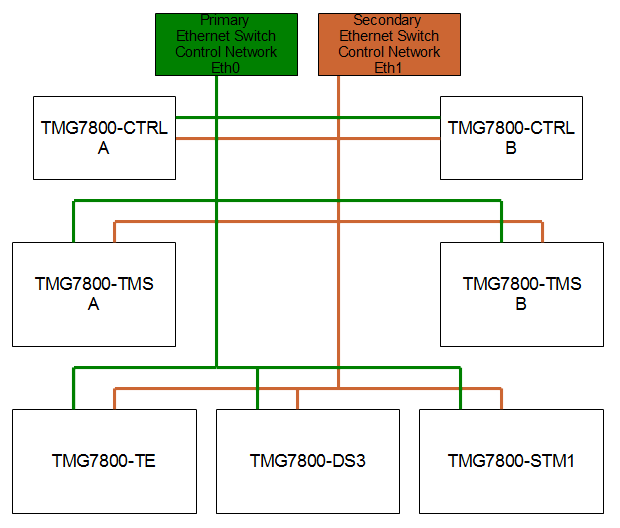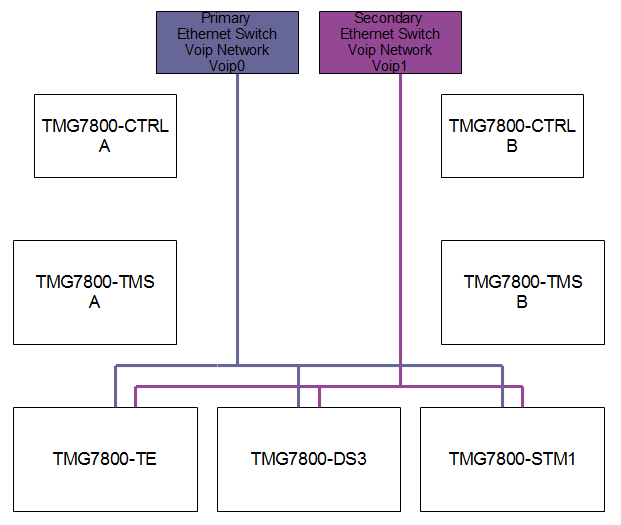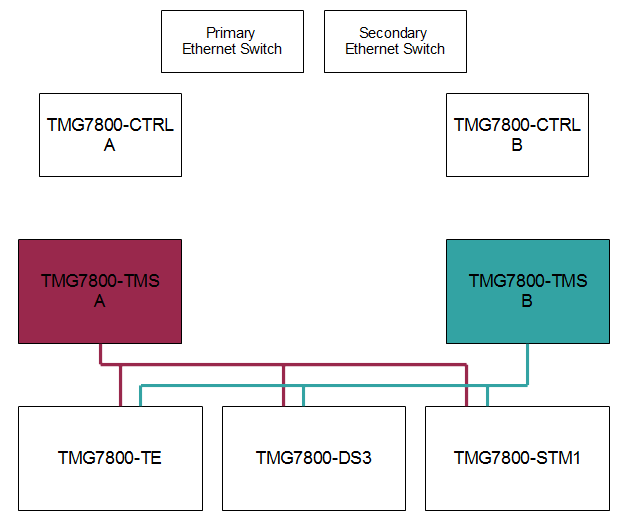High Availability:Hardware:Networking
Networking is a critical section of the system that is sometimes overlooked. An adequate network will avoid problems like congestion or disconnection.
Contents |
Ethernet Network
TelcoBridges recommends the following when setting up a Ethernet network:
- The entire network should be running at 1 Gb/s (all Ethernet switches, Ethernet cards and Ethernet cables).
- Use 2 Managed Ethernet Switches.
- Use different subnet for each control network and each voip network.
- Use VLAN from the Managed Switches to separate traffic (1 VLAN for the control network, 1 VLAN for the voip network per Ethernet switch).
Warning Ip teaming or Ip bonding is not recommended. A host with Ip teaming configure will not be able to control Tdev devices.
Control Network
The control network is the Ethernet network used by Toolpack to control the Toolpack applications and the Tdev hardware products. TelcoBridges provides 2 control ports on all its Tdev (except TMP800).
The redundancy of the control network is done by using 2 independent network (1 for each control ports).
Recommended Setup
Here is a schematic of the recommended control network connection for a high availability system:
Voip Network
The voip network are secured interfaces that are use to send signaling and data over Ip networks (i.e. Sip, Sigtran). They are considered secured because it is not possible to control the Tdev through those interfaces. TelcoBridges provides 2 voip ports on all its Tdev products (except TMP800).
The redundancy of the voip network is done by using 2 independent network (1 for each voip ports).
Recommended Setup
Here is a schematic of the recommended voip network connection for a high availability system:
TMS Network
The TMS network is use to connect the multiple TMP6400 or TMP7900 telecom units together. It allows a TMP6400 to bridges an incoming call leg to another TMP6400 using the TMS network instead of wasting tdm or voip resources to connect. It is possible to expand a system from 2016 non-blocking bridges (1 TMP6400) up to 32768 non-blocking bridges (16 TMP6400) with the TMS network.
The TMS network redundancy is achieved by using 2 TMS1600 and connecting each TMP6400 to both TMS1600. The TMP6400 has 2 TMS port called (TMS-1 and TMS-2). The TMS connection requires a very specific type of cable see installation guides section 2.6 (Connecting the TMP6400s to the TMS1600)for more info
Recommended Setup
Here is a schematic of the recommended TMS network connection for a high availability system:


